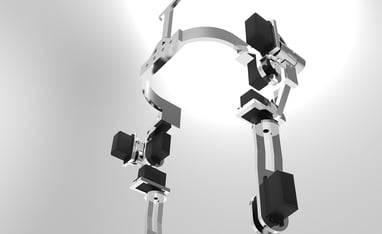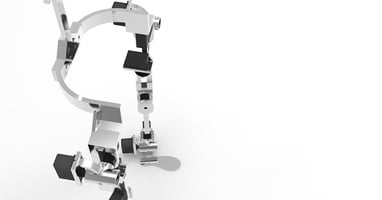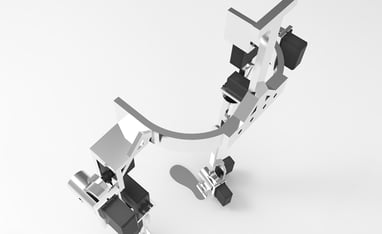Exoskeleton Prototype
A prototype of an exoskeleton as part of a project of EXS Bionics ○ 2013 - 2014
My Role:
Engineer Designer
Timeline:
a few months in 2013-2014
Tools:
Solid Works
NX Studio (Siemens NX)
3D Printing


Later Valentin Genev joined the team as a second engineer designer.
The slide above was prepared by Nikola Efremov to present the team and project in November 2013. View the presentation here.
Objective
Our team, led by Georgi Chipov was on a mission to create an exoskeleton to support different groups of people.
After research, we found out that there are several industries that will greatly benefit from such invention - Astronauts on Long Space Missions, over 3 million paraplegics worldwide, and industries in need of increased human strength and endurance.
My role
My role as an engineer designer was (these points were valid for every team member):
- Ensure project scalability and design
- 6 degrees of freedom per leg - Human body has certain degrees of mobility and when it comes to the legs, I had to calculate and limit the angles and degrees of freedom of the exoskeleton.
- Consistent with human anatomy and movement - All human bodies are different and required an individual approach. Although the prototype featured below is not reflecting this, in the long run, we were planning to make sure that the exoskeleton is adjustable and can serve as many body types as possible.
- Understand technology limitations - Ad the project continued, we used 3d printers and motors to test the exoskeleton. The design was to hold and assure mobility using the provided materials.
Walkie
"Walkie", our little prototype, was designed using Siemens NX and later printed into 3D modal to test predefined movements, algorithms, and balance. The model lacks scalability but was giving us enough insights into the basic systems we were designing.
In the original prototype, there are stoppers to ensure proper degrees of freedom. However we didn't want to damage the little motors we were using, so those were not included in the printed version.












